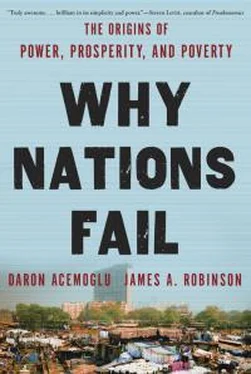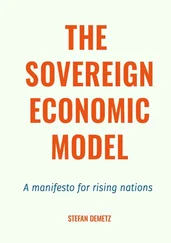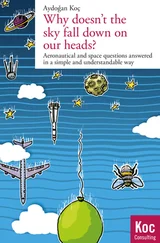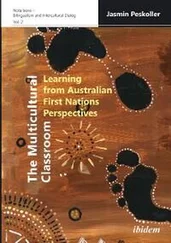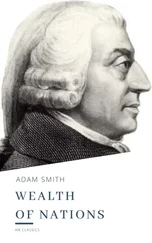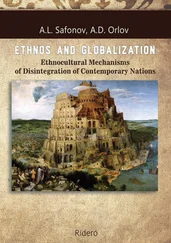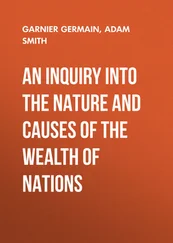Published in the United States by Crown Publishers, an imprint of the Crown Publishing Group, a division of Random House, Inc., New York.
www.crownpublishing.com
CROWN and the CROWN colophon are registered trademarks of Random House, Inc.
Library of Congress Cataloging-in-Publication Data
Acemoglu, Daron.
Why nations fail : the origins of power, prosperity, and poverty / Daron Acemoglu, James A. Robinson.—1st ed.
p. cm.
Includes bibliographical references.
1. Economics—Political aspects. 2. Economic history—Political aspects. 3. Poverty—Developing countries. 4. Economic development—Developing countries.
5. Revolutions—Economic aspects. 6. Developing countries—Economic policy.
7. Developing countries—Social policy. I. Robinson, James A., 1960–. II. Title.
HB74.P65A28 2012
330—dc23
2011023538
eISBN: 978-0-307-71923-2
Maps by Melissa Dell
Jacket design by David Tran
Jacket photograph by Kirk Mastin/Getty Images
v3.1
For Arda and Asu —DA
Para María Angélica, mi vida y mi alma —JR
CONTENTS
Cover
Title Page
Copyright
Dedication
PREFACE
Why Egyptians filled Tahrir Square to bring down Hosni Mubarak and what it means for our understanding of the causes of prosperity and poverty
1.
SO CLOSE AND YET SO DIFFERENT
Nogales, Arizona, and Nogales, Sonora, have the same people, culture, and geography. Why is one rich and one poor?
2.
THEORIES THAT DON’T WORK
Poor countries are poor not because of their geographies or cultures, or because their leaders do not know which policies will enrich their citizens
3.
THE MAKING OF PROSPERITY AND POVERTY
How prosperity and poverty are determined by the incentives created by institutions, and how politics determines what institutions a nation has
4.
SMALL DIFFERENCES AND CRITICAL JUNCTURES: THE WEIGHT OF HISTORY
How institutions change through political conflict and how the past shapes the present
5.
“I’VE SEEN THE FUTURE, AND IT WORKS”: GROWTH UNDER EXTRACTIVE INSTITUTIONS
What Stalin, King Shyaam, the Neolithic Revolution, and the Maya city-states all had in common and how this explains why China’s current economic growth cannot last
6.
DRIFTING APART
How institutions evolve over time, often slowly drifting apart
7.
THE TURNING POINT
How a political revolution in 1688 changed institutions in England and led to the Industrial Revolution
8.
NOT ON OUR TURF: BARRIERS TO DEVELOPMENT
Why the politically powerful in many nations opposed the Industrial Revolution
Photo Inserts
9.
REVERSING DEVELOPMENT
How European colonialism impoverished large parts of the world
10.
THE DIFFUSION OF PROSPERITY
How some parts of the world took different paths to prosperity from that of Britain
11.
THE VIRTUOUS CIRCLE
How institutions that encourage prosperity create positive feedback loops that prevent the efforts by elites to undermine them
12.
THE VICIOUS CIRCLE
How institutions that create poverty generate negative feedback loops and endure
13.
WHY NATIONS FAIL TODAY
Institutions, institutions, institutions
14.
BREAKING THE MOLD
How a few countries changed their economic trajectory by changing their institutions
15.
UNDERSTANDING PROSPERITY AND POVERTY
How the world could have been different and how understanding this can explain why most attempts to combat poverty have failed
ACKNOWLEDGMENTS
BIBLIOGRAPHICAL ESSAY AND SOURCES
REFERENCES
PREFACE
THIS BOOK IS about the huge differences in incomes and standards of living that separate the rich countries of the world, such as the United States, Great Britain, and Germany, from the poor, such as those in sub-Saharan Africa, Central America, and South Asia.
As we write this preface, North Africa and the Middle East have been shaken by the “Arab Spring” started by the so-called Jasmine Revolution, which was initially ignited by public outrage over the self-immolation of a street vendor, Mohamed Bouazizi, on December 17, 2010. By January 14, 2011, President Zine El Abidine Ben Ali, who had ruled Tunisia since 1987, had stepped down, but far from abating, the revolutionary fervor against the rule of privileged elites in Tunisia was getting stronger and had already spread to the rest of the Middle East. Hosni Mubarak, who had ruled Egypt with a tight grip for almost thirty years, was ousted on February 11, 2011. The fates of the regimes in Bahrain, Libya, Syria, and Yemen are unknown as we complete this preface.
The roots of discontent in these countries lie in their poverty. The average Egyptian has an income level of around 12 percent of the average citizen of the United States and can expect to live ten fewer years; 20 percent of the population is in dire poverty. Though these differences are significant, they are actually quite small compared with those between the United States and the poorest countries in the world, such as North Korea, Sierra Leone, and Zimbabwe, where well over half the population lives in poverty.
Why is Egypt so much poorer than the United States? What are the constraints that keep Egyptians from becoming more prosperous? Is the poverty of Egypt immutable, or can it be eradicated? A natural way to start thinking about this is to look at what the Egyptians themselves are saying about the problems they face and why they rose up against the Mubarak regime. Noha Hamed, twenty-four, a worker at an advertising agency in Cairo, made her views clear as she demonstrated in Tahrir Square: “We are suffering from corruption, oppression and bad education. We are living amid a corrupt system which has to change.” Another in the square, Mosaab El Shami, twenty, a pharmacy student, concurred: “I hope that by the end of this year we will have an elected government and that universal freedoms are applied and that we put an end to the corruption that has taken over this country.” The protestors in Tahrir Square spoke with one voice about the corruption of the government, its inability to deliver public services, and the lack of equality of opportunity in their country. They particularly complained about repression and the absence of political rights. As Mohamed ElBaradei, former director of the International Atomic Energy Agency, wrote on Twitter on January 13, 2011, “Tunisia: repression + absence of social justice + denial of channels for peaceful change = a ticking bomb.” Egyptians and Tunisians both saw their economic problems as being fundamentally caused by their lack of political rights. When the protestors started to formulate their demands more systematically, the first twelve immediate demands posted by Wael Khalil, the software engineer and blogger who emerged as one of the leaders of the Egyptian protest movement, were all focused on political change. Issues such as raising the minimum wage appeared only among the transitional demands that were to be implemented later.
To Egyptians, the things that have held them back include an ineffective and corrupt state and a society where they cannot use their talent, ambition, ingenuity, and what education they can get. But they also recognize that the roots of these problems are political. All the economic impediments they face stem from the way political power in Egypt is exercised and monopolized by a narrow elite. This, they understand, is the first thing that has to change.
Читать дальше
